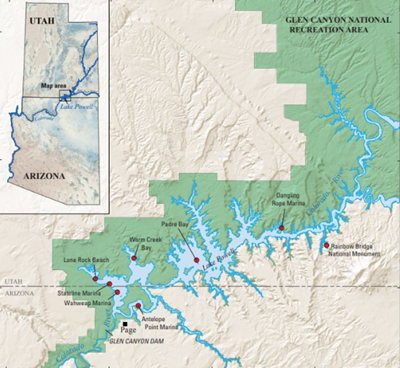
USGS Investigators: Geoff Moret
NPS Investigators:
| 2018 |
|---|
| $50,000 |
Lake Mead National Recreation Area (LAKE), established in 1964 and managed by the National Park Service (NPS), spans two states (Arizona and Nevada) and hosts approximately 7 million visitors each year. Water quality in Lake Mead generally exceeds the standards set by the State of Nevada, and is well within the “good†category for recreation and aquatic health (Rosen and others 2012). However, since 2011, small harmful algal blooms (HABs) of Microcystis cyanobacteria have begun to occur sporadically throughout Lake Mead.
Currently the water elevation at Lake Mead is near its historic low. A concern among water managers is that a rise in lake level in response to a wet year could result in the release of a pulse of phosphate from sediment above the current lake level, and that this phosphate pulse could trigger a HAB. The overall objective of this study is to improve our understanding of the potential for a phosphate pulse (and subsequent HAB) as the result of an increase in Lake Mead’s water level.
